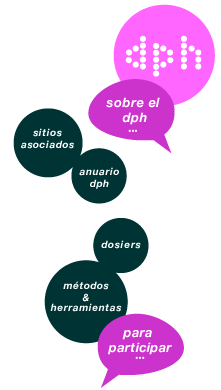Economic consequences of the mad-cow, foot and mouth diseases in Great-Britain and beyond
The plight of animal farmers
05 / 2002
Mad-cow, Foot and Mouth diseases respectively have drawn the world’s attention in 1987 and 2001. Their devastating effects have not only been felt in Great Britain, where the diseases originated, but as far as in Europe and Asia. Christopher Jones explains that the mad-cow disease originated in Great Britain in 1987. According to him again, the cause of the disease is that cattle food was made of blood and brain of cows, instead of respecting the vegetarism of those animals. The disease is not infectious. Its spread is blamed on Britain’s inability to control it and on her continual exportation of cattle feed containing the blood and brain of cows. Indeed, British government seems to have been slow at taking effective measures to combat the disease as soon as possible. To begin with, the government disallowed the consumption of affected cows because it was believed that it could affect people the same way as cows were affected. Then, the government banned the use of blood and brain in the making of animal food. In the same time, experiments were conducted to find out whether an affected cow could pass on the disease to its offspring since it was incubated for five years before symptoms could be detected. Indeed, as the disease was coming from the blood of cows, a pregnant one might easily transmit it to its foetus. Mad-cow disease has produced lasting consequences that have been felt even across the boarders of Great-Britain. Consumers throughout Europe became threatened to eat beef. This led to a fall in its demand, which further caused a fall in prices. Consequently, the incomes of cattle farmers reduced drastically and farmers experienced a fall in their standards of living and were engulfed into debts. A crisis sparked off between cattle breeders and other farmers against the government.
The disastrous consequences of the British governement’s policy greatly contributed to the formation of the Farm Crisis Network in 1995, but its groundwork started in 1991. In 1995, Mr Christopher Jones with four other protagonists got inspiration from both an experience in Nigeria with young farmers’ cooperatives and the Christian Council in the 1970’s, and from a Protestant Farmers’ Meeting which they attended in Germany in 1993. The common experience shared was that small scale farmers of both countries were marginalised as they were not consulted in decision-making affecting them. The network works in partnership with the Christian Farmers and Rural Affairs Office in England. It should be noted here that the organisation had a strong Christian background that whished to instil the spirit of love and co-operation among its members. The Farm Crisis Network was founded in Britain to combat the negative consequences of the mad-cow disease and to improve the economic conditions of the farmers through a common discussion above production. About 18 volunteer groups within the network, along with the churches, gave moral, spiritual and material support to those who were hard-hit by the disease. The organisation also brought pressure upon the government through advocacy to find urgent solutions to the prevailing economic situation. The limited result was that consumption of affected cows was stopped in Britain. Today, the mad-cow disease appeared in Japan and is growing in France, while it is nearly finished in Britain.
The foot and mouth disease is characterised by sores on the feet and mouths of all farm animals and some wild ones, which render them incapable of walking and eating. It is highly infectious. As suggested by Christopher Jones, the cause of foot and mouth disease is not understood. But in human terms it could be likened to measles. The disease first experienced in Britain in 2001 spread to Ireland, France and Netherlands. Its spreading is attributed to wind, contact between animals, and birds. Efforts made to control the deadly disease were slaughtering and burying affected animals immediately, and banning the movement of other animals during eight months. Ireland, France and Netherlands were successful in eliminating the disease within a few months, while it took Britain almost a year. Was it so because the government did not have the capacity to deal with it immediately? Added to this was the instituting of complicated and irregular laws concerning the movement of cattle. Today, British farmers are still facing the decrease in the number of their animals resulting from mass slaughter. Others endure a fall in incomes, poverty, lower standards of living and indebtedness.
Palabras claves
agricultura orgánica, política agrícola
, Reino Unido
Comentarios
In spite of the disappearance of Foot and Mouth disease and the nearly extinct of the mad-cow disease, the Farm Crisis Network is still functioning. Amidst the struggle for total elimination of the latter disease, it is continuing its work to improve the standards of its members. It has been observed that the state is not quickly enough responsive. If the British government had responded fast to the call of the Farm Crisis Network and to the blames that came from other countries affected, the effects of those terrible diseases would have been minimised. Thus, the lessons exposed by the ordeals under review should be learnt by other governments.
Notas
This file was written during the World Peasant Meeting in Yaounde, Cameroon, from the 6th to the 11th of May 2002.
Contact : Christopher Jones, B.A Agric. National Co-ordinator - Tel/Fax: 01788 510 240 - pmd@uccf.org.uk
Interview with JONES, Christopher
Fuente
Entrevista



